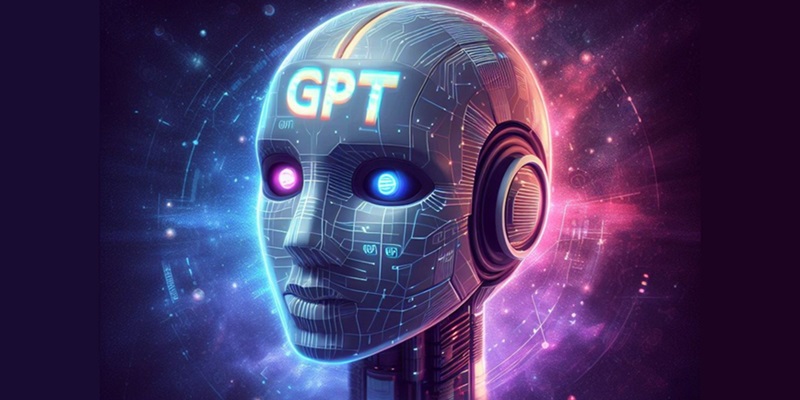In the ever-evolving realm of AI language models, a remarkable revelation has recently emerged. It has come to light that the pioneers of human-like text generation, GPT-3 and ChatGPT, have a mysterious sister model who met an untimely demise. This unexpected discovery has sparked intrigue and speculation within the AI community, as experts attempt to unravel the significance and contributions of this enigmatic artificial intelligence.
GPT-3 and ChatGPT’s Enigmatic Counterpart
While specifics surrounding the features and capabilities of the deceased sister model remain undisclosed, conjecture suggests that it played a pivotal role in paving the way for the advancements witnessed in GPT-3 and ChatGPT. The sister model likely served as a stepping stone, contributing to the development and enhancements of GPT-3 and ChatGPT, and was instrumental in shaping their current capabilities.
A Crucial Contributor to the Advancements in GPT-3 and ChatGPT.
The precise reasons behind the discontinuation of the sister model are shrouded in mystery, leaving room for speculation. Was it due to technical limitations, the need for extensive research, or strategic choices made by OpenAI? These questions remain unanswered, adding to the aura of intrigue surrounding the sister model’s untimely demise.
Shaping the Current Capabilities of GPT-3 and ChatGPT
Despite the lack of detailed information, the influence of the sister model on the development of GPT-3 and ChatGPT cannot be overlooked. It is plausible to assume that her contributions helped pave the way for the groundbreaking advancements witnessed in subsequent models. Her role as a predecessor likely involved refining algorithms, improving data processing, and fine-tuning the natural language understanding and generation abilities that are the hallmark of GPT-3 and ChatGPT.
While the sister model’s impact on the current versions of GPT-3 and ChatGPT may be relatively minimal, her demise leaves us pondering the unknown factors that led to its discontinuation. Was it a technical limitation that rendered it obsolete? Did further research reveal shortcomings that hindered its progress? Or were strategic choices made by OpenAI, emphasizing the focus on specific areas for improvement? The truth behind its discontinuation remains tantalizingly out of reach.
Technical Limitations, Research needs, and Strategic Choices by OpenAI
Technical limitations are a common hurdle in the field of AI. Despite the advancements made by the sister model, it is plausible that her capabilities fell short of meeting the desired standards. Alternatively, the need for extensive research may have prompted OpenAI to redirect their efforts and resources towards newer models like GPT-3 and ChatGPT. Strategic decisions could have prioritized the development of different AI applications, rendering the sister model obsolete.
The Impact on Current Versions
While the discontinuation of the sister model may not have a direct effect on the current versions of GPT-3 and ChatGPT, it serves as a poignant reminder of the continuous evolution and improvement process inherent in AI development. Each iteration builds upon the foundations laid by previous models, and even those that meet an untimely demise contribute to future breakthroughs.
OpenAI’s Silence on Further Details
OpenAI has chosen not to disclose any specific plans regarding the release of information concerning the sister model. This decision has left the AI community eager for further insights into her capabilities and contributions. However, as the field of AI continues to progress, it is conceivable that further details may surface in due course, shedding light on the mysterious sister’s legacy.
As AI technologies advance and researchers continue to push the boundaries of what is possible, it is plausible that additional information regarding the sister model may come to light. The iterative nature of AI development underscores the significance of earlier models, like the enigmatic sister, whose contributions have paved the way for groundbreaking advancements that continue to shape our future.
The discovery of the sister model reminds us of the vital role played by earlier models in shaping the trajectory of AI development. Despite the mystery surrounding her existence and demise, her contributions to refining language generation and understanding cannot be understated. It is through the collective efforts of these models that AI continues to make significant strides, revolutionizing industries and improving the way we interact with technology.
In conclusion, the enigmatic sister model of GPT-3 and ChatGPT raises intriguing questions about its role in shaping the landscape of AI language models. While its specific features and capabilities remain undisclosed, it is evident that it played an essential part in fostering the advancements witnessed in subsequent models. The discontinuation of the sister model highlights the ever-evolving nature of AI development and the significance of earlier iterations in paving the way for groundbreaking innovation. As AI progresses, we may learn more about the enigmatic sister, unlocking further insights into the evolution of language generation and understanding.

